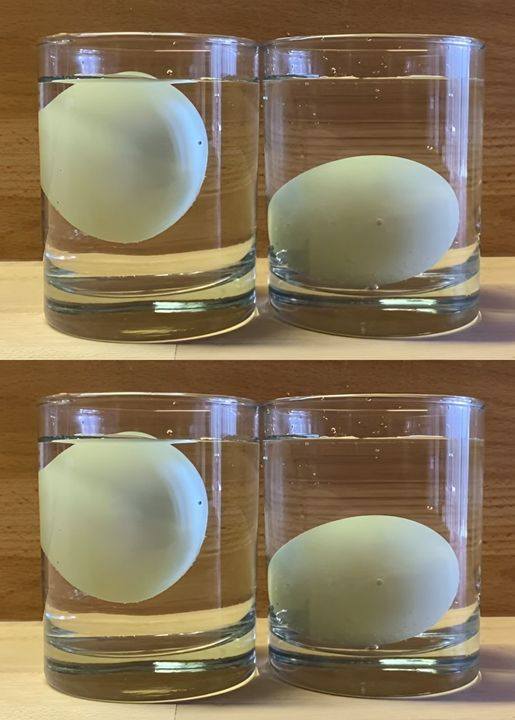ADVERTISEMENT
- Shell Condition: Check for cracks or a slimy texture on the shell. A fresh egg should have a clean, unbroken shell. If you notice any cracks, bacteria can enter the egg, leading to spoilage.
- Contents: After cracking the egg, look at the yolk and the egg white (albumen).
- Fresh Egg: The yolk will be bright yellow or orange and sit high, while the egg white will be thick and clear.
- Older Egg: The yolk may be flatter and duller in color, while the egg white will be thinner and spread out more.
4. Shake Test
If you’re uncertain about an egg’s freshness, the shake test is another quick method.
- Shake the Egg: Hold the egg close to your ear and gently shake it.
- Fresh Egg: You shouldn’t hear anything. A fresh egg has a solid yolk and thick white, which prevents movement.
- Older Egg: If you hear a sloshing sound, it indicates that the egg’s contents have become more fluid as it ages, meaning it’s likely past its prime.
5. Check the Pack Date
Finally, the easiest way to ensure your eggs are fresh is to check the packaging.
- Look for Sell-By or Expiration Dates: Eggs are usually stamped with a sell-by or expiration date. While eggs can often last beyond these dates if stored properly in the refrigerator, it’s a good starting point. If the date is approaching or has passed, use the other tests to determine their freshness.
Conclusion
Ensuring that your eggs are fresh is essential for both taste and food safety. By employing these five methods— the water test, sniff test, visual inspection, shake test, and checking the pack date— you can confidently determine the freshness of your eggs. Remember, when in doubt, it’s better to err on the side of caution and discard any eggs that seem questionable. Enjoy your cooking with the peace of mind that you’re using only the freshest ingredients!
ADVERTISEMENT
